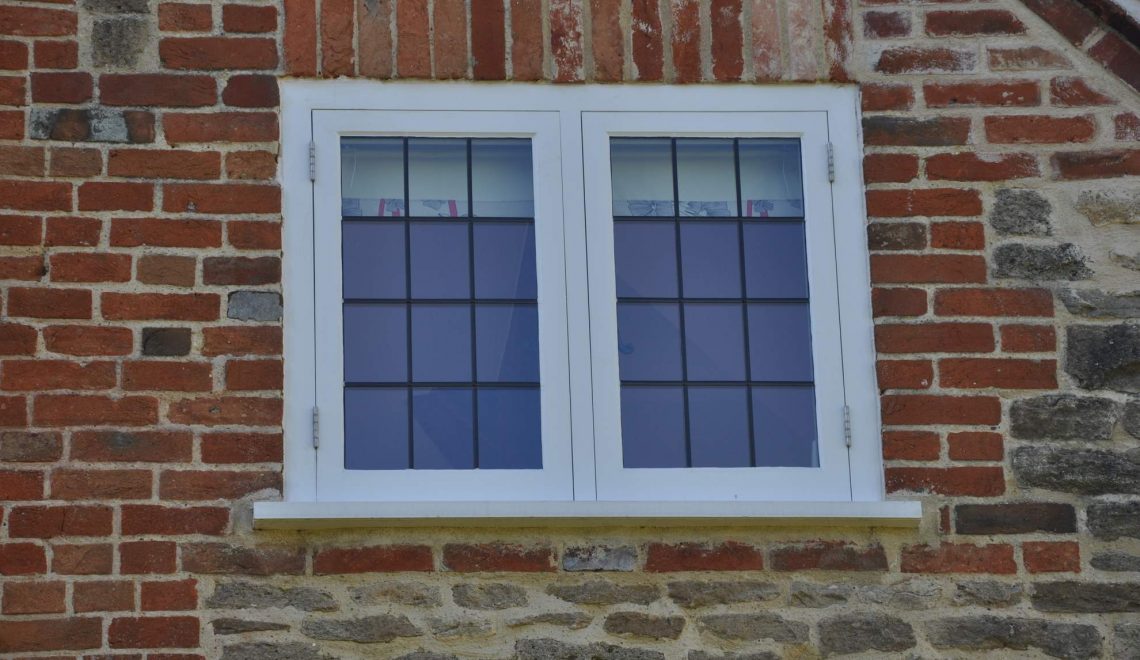Our house is listed and the Georgian sash windows are so integral to the look of the house that I’d never want to alter them. The solution for these windows has been to draught-proof and close the shutters early in the evening! But, we also had some Edwardian casement windows which were in serious disrepair and I managed to get consent to replace these with new, replica windows containing slim profile double glazing.
Windows lose heat in two ways – through draughts and through the glass itself. Research on sash windows shows that 60% of heat is lost through air leakage so the priority should always be to sort draughts out first (see my post on draught-proofing). Traditional windows are an asset to a house and it’s wasteful to replace them if they are in good shape. There are excellent companies who can restore the most distressed looking window so only replace if repair isn’t an option. But if you’re losing a lot of heat through your windows, with lots of condensation being the tell-tale sign, then your best option is to do something about the glass.
- One option is to retain the window frame but to replace the glass with slim double glazing. This depends on the thickness and strength of your window frame. It is an easier task if you’ve got casement windows (ones attached with hinges) although there are examples of it being achieved successfully on Victorian sash windows. Where it doesn’t work so well is on Georgian windows where the astragals are too thin to take the thicker glass. Although I haven’t used them, Mill House Window Workshop and Envirosash have been recommended to me for retrofitting.
- If the above option isn’t feasible then you’ll need to have new double or triple glazed windows made. Some interesting research from Passivhaus measured the internal surface temperature of a window where the outside temperature was -5°C and the inside temperature was 21°C. It showed that the temperature adjacent to a single glazed window was 1°C, a modern double glazed window saw it rise to 16°C and a triple glazed window reached 18°C. Triple glazing is obviously the most energy efficient but it has the aesthetic drawback of requiring very solid frames. We’re going to use it in our new extension but I wouldn’t want to use it in the older part of the house. Enhabit are a design company that focus on transforming old buildings and they are suppliers of high performance triple glazed wooden windows sourced from Germany. If you’re constrained by listing or conservation area rules then slim double glazing or even single glazing may be your only options.
- I’ve had many windows made and these are the tips I can offer:
- Ask questions about the type of wood being used. Hardwoods are considerably longer lasting than softwoods and although the upfront cost will be higher you’ll save money on maintenance. I’m not a fan of sapele because it’s hard to track its provenance so I usually pay the 10% more for European oak. An option that is increasingly available is Accoya (see my post on Dreaming of Summer). It comes with a 50 year guarantee and is cheaper than oak. I’m having some new Accoya dormer windows made so I’ll post some photos when they’re finished.
- Be exacting over the profile of the new window especially if it needs to match an old or adjacent window. The thicker the glazing unit the chunkier the frame needed to hold it. Wide flat astragals on a Georgian style window can block out surprising amounts of light and marr the look and proportions of a building.
- Ask about the U-value of the glass. The U-value tells you how much heat will be lost through your window and the lower the figure the better. A single glazed window will have a U-value of 5.8 W/m²K whereas double glazing will range from 1 to 2 W/m²K depending on the depth of the air gap and what it’s filled with. Krypton will produce a far better U-value than air or argon and will save more energy than is used in its manufacture. Xenon, however, is very energy intensive and from a green perspective should be avoided. Pilkington Spacia use a vacuum rather than gas, have a very thin profile and a good U-value. They are expensive though and, being manufactured in Japan, come with air mile issues.
- One thing that can make a big difference to the look of double glazing, especially in period properties, is the colour of the spacer material that separates the panes of glass. Spacers used only to be black but now they come in a variety of colours to match your frame including white and grey.
- Finally, THIS BIT’S IMPORTANT – guarantees and evidence of long term performance tests are important because some double glazed units are poor quality and fail after a few years. Check that the glass is CE marked and meets all six of the durability standards set by BS EN 1279. The glass manufacturer I always use is the Original Glass Company because they comply with all the standards, are competitively priced and manufactured entirely in the UK. Histoglass is another well regarded manufacturer and are particularly good for specialist finishes including their mono glazing which has a 40% better U-value than standard single glazing. The slim double glazing that I’ve installed has an aluminium spacer rather than a warm-edge spacer which makes it much less susceptible to water ingress.


Leave A Comment